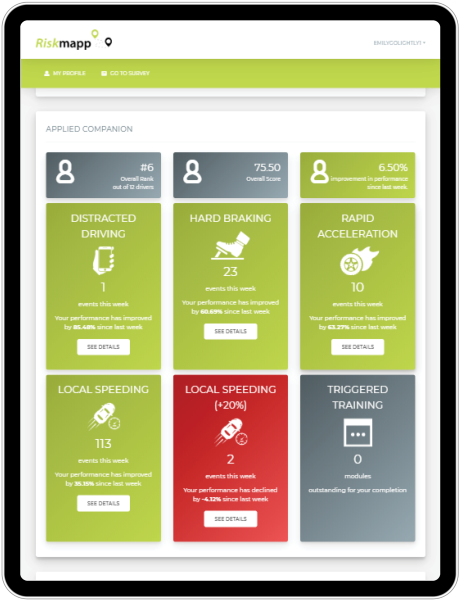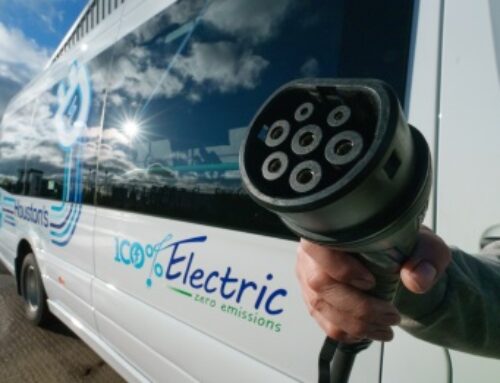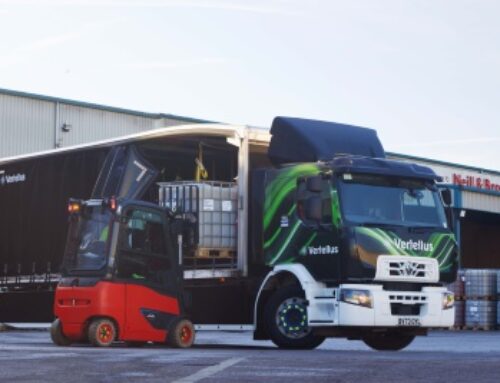The road to safer driving
 Richard Shaw, global sales director at Applied Driving Techniques, describes how technology can help fleets engage with drivers to reduce road risk
Richard Shaw, global sales director at Applied Driving Techniques, describes how technology can help fleets engage with drivers to reduce road risk
With around a third of road deaths and serious injuries typically attributed to work-related activity each year, organisations have a clear responsibility to protect employees and the general public when they are driving. However, too many transport operations are still overlooking the risks associated with driving – often concentrating on other aspects of health and safety – despite it being the foremost occupational hazard.
Fleet risk management has progressed in recent years and continues to develop with the greater use of technology. In-vehicle systems – including vehicle tracking, AI vehicle cameras, driver behaviour monitoring and advanced driver-assisted systems (ADAS) – are making it possible to capture vital information about driver performance, provide immediate engagement and gain a greater understanding of risk.
However, the unprecedented levels of real-time and historical fleet data now available does not necessarily translate to useable knowledge and insight. All too often, both public and private organisations can become overwhelmed by the amount of data they have and struggle to know what to do with it.
Ultimately, the aim is to understand why fleet risk is occurring and have processes to mitigate and reduce the potential impact, so it is about being in the position to consolidate, analyse and demonstrate the flexibility to adapt.
The introduction and adoption of technology supports greater scale and scope, especially for larger fleets where fragmented processes make it harder to consolidate everything together into something that is consistent and robust. It has resulted in more complex risk modelling and the ability to take proactive steps that provide support in the right places.
In fact, an organisation can deliver an appropriate level of training to the people that need it the most by using technology to identify and assess the risks.
There is now an opportunity to bring together available data through a single system to gain even greater understanding. This could help determine how safe an organisation is; who is most at risk; how different parts of an operation compare; and what are the latest trends, making it possible to make targeted interventions based on this understanding.
The next step is to have a safety management system in place that engages with drivers using real-time and historical driving data. By providing drivers with useful feedback, based on their individual performance, it becomes possible to create and develop a responsible driving culture and eliminate risky driving behaviours.
Such a messaging strategy communicates targeted updates, bulletins and online training requests, with further escalation if required, so organisations can make appropriate interventions.
The objective is not simply about changing behaviour, but attitude, by constantly reinforcing safety messages and treating drivers as individuals with unique needs. This can be supported by creating a competitive element providing drivers with individual scores that can be viewed alongside company and peer group averages.
The gamification of what can be viewed as an onerous or needless task can certainly motivate change and can also be linked to an incentive that rewards the most improved drivers.
With all this in mind, we launched an AI-driver and safety and performance app, Applied Companion. Best described as a ‘Fitbit for driving’, it takes a driver-centric and supportive approach to revolutionise fleet risk management, providing useful performance feedback along with integrated tools that encourage improvement.
During trials of the app, we witnessed a dramatic change in at risk driving behaviours, with a significant reduction in speeding (68 per cent), harsh braking (70 per cent), rapid acceleration (90 per cent) and distracted driving (100 per cent).
The app uses the sensor inputs of a smartphone combined with sensor AI to identify at-risk driving events – harsh braking, rapid acceleration, contextual speeding, phone handling – and generate actionable information.
Targeted messages are sent to the driver in the first instance as a safety reminder, followed by a series of safety videos and online training modules to reinforce good driving choices, with notifications sent to relevant managers for persistent issues.
A weekly report for both employees and key stakeholders provides an easy-to-view summary, including a simple ranking system to encourage healthy competition.
No one consciously leaves the house with the intent of driving poorly or causing a collision, but work and home pressures can often cause distraction and take peoples’ minds off the task at hand.
There are many people working within local authorities that are not classified as drivers and yet spend more time driving than anything else. These valued staff need a constant reminder about the importance of positive driving behaviour to change their mindset, reduce fleet risk and ultimately save lives.











